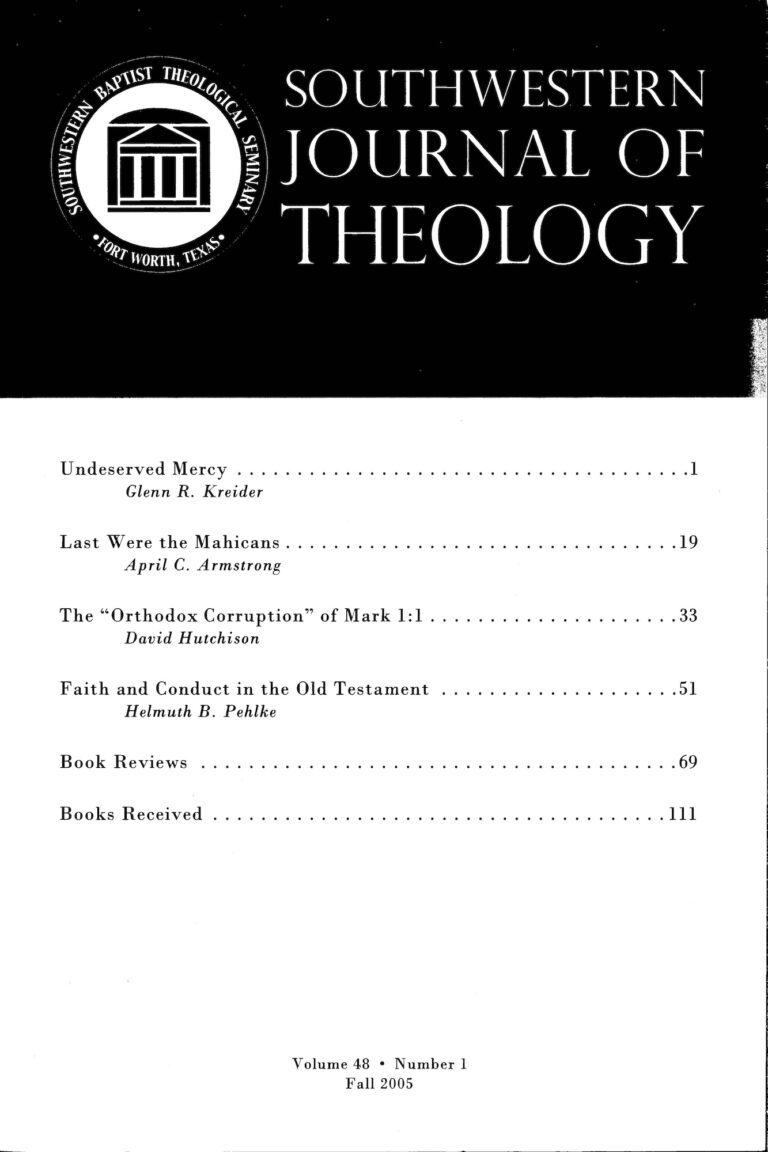
Southwestern Journal of Theology (48.1)
Southwestern Journal of Theology
Volume 48, No. 1 - Fall 2005
Editor: Paige Patterson
By J. Ligon Duncan and Susan Hunt. Wheaton: Crossway, 2006. 175 pages. Softcover, $14.99.
At first glance, one might expect Women’s Ministry in the Local Church to be another how-to book for the women’s ministry leader. However, after reading only the first page, it is apparent that instead of dealing with the specifics of a women’s ministry, Duncan and Hunt set out to present a “practical theology of women’s ministry in the local church” (1). The authors seek to present more of the biblical foundation and theological framework of a women’s ministry than the nuts and bolts of carrying out this focused ministry area. Duncan and Hunt are clear from the beginning that the book refers heavily to and builds upon The Danvers Statement and Biblical Foundation of Womanhood materials.
With its overview of key biblical passages related to biblical womanhood, one of the strengths of this publication is the authors’ ability to emphasize the complementarían role of a women’s ministry as it functions within the context of the local church. There have been few writings that have painted as clear a picture that a biblical women’s ministry operates under the authority of the church and its leadership. Hunt, especially, is keen to point out the prevalent disconnect between the biblical teaching of womanhood and the practical implementation of a women’s ministry in the local church context. It is apparent that the authors love the local church and want it to accomplish its mission and to do nothing short of bringing glory to God.
Ironically, one of the weaknesses of this book comes in the area of creating a functional model. Offering “tasks” and “tools” for a women’s ministry, the authors repeatedly refer to the Biblical Foundation of Womanhood materials. A reader who is not familiar with these materials would find it difficult to implement many of the suggestions made. Additionally, because the authors’ are associated with the Presbyterian Church (Duncan as senior pastor and Hunt as former Director of Women’s Ministries), “tasks” and “tools” are couched within a Presbyterian polity. There are many ideas the reader can glean from these sections, but she must be careful to translate those ideas to the governing context of her local church.
The initial chapters of the book present the authors’ thesis ending with a sermon that Duncan preached at a women’s leadership conference. It is this sermon that enumerates the main reasons a women’s ministry is vital to the local church. The remainder of the book is spent unpacking the points presented in the sermon. This format may at first be found confusing and disjointed but will soon become clear as the reader moves through the text.
Duncan and Hunt’s volume is a good initial resource for pastors and women’s ministry leaders in the local church. As it presents a quick overview of biblical womanhood, its greatest asset is the emphasis on the role a women’s ministry should play within the local church. This can be immensely beneficial for a fledgling women’s ministry or can help a pastor redirect a women’s ministry that has wandered from the ideal.





